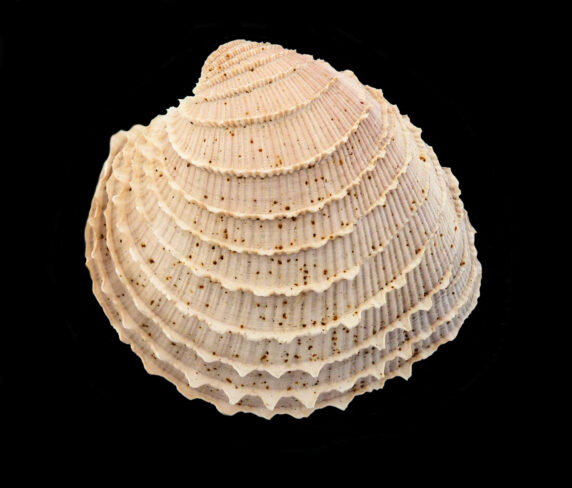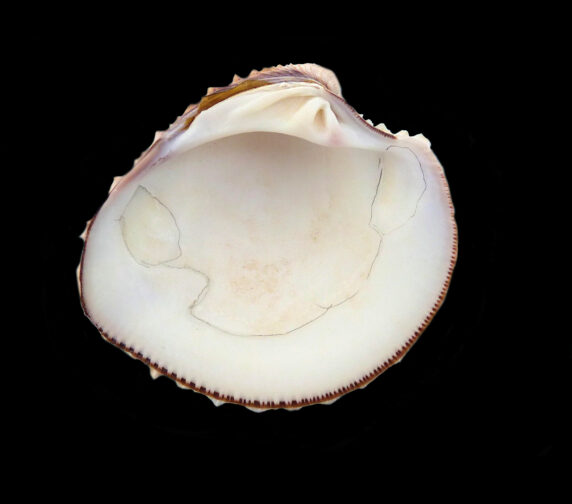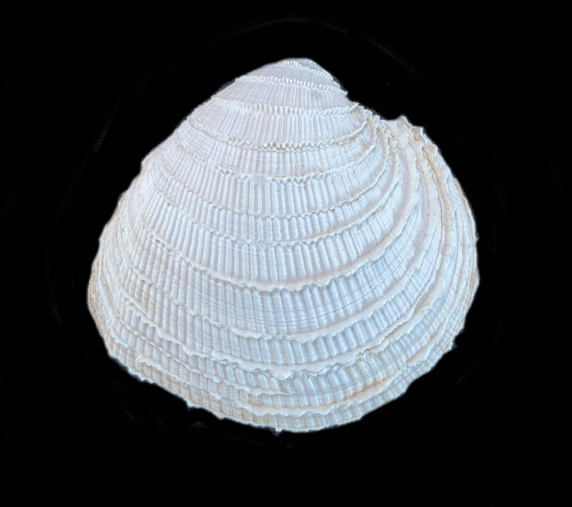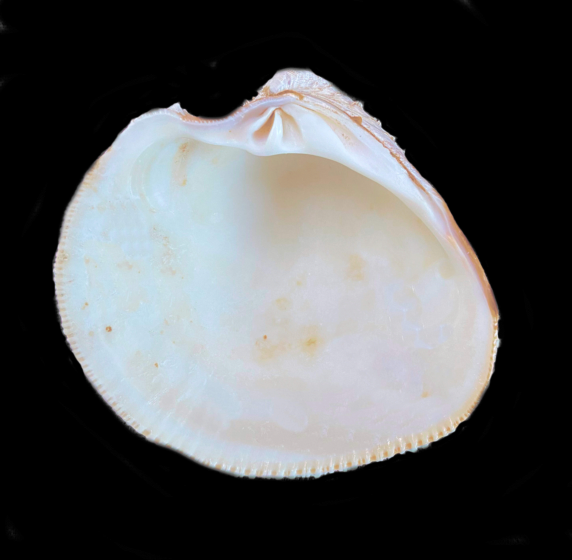Gnidia Venus Clam Shell, Chionopsis gnidia

 Gnidia Venus Clam Shell, Chionopsis gnidia. Shell collected in the Puerto Adolfo Lopez Mateos, Baja California Sur, March 2019. Size: 5.8 cm (2.3 inches) x 5.0 cm (2.0 inches). Identification courtesy of Bob Hillis.
Gnidia Venus Clam Shell, Chionopsis gnidia. Shell collected in the Puerto Adolfo Lopez Mateos, Baja California Sur, March 2019. Size: 5.8 cm (2.3 inches) x 5.0 cm (2.0 inches). Identification courtesy of Bob Hillis.

 Gnidia Venus Clam Shell, Chionopsis gnidia. Shell collected off the beach at Punta Chivato, Baja California Sur, December 2021. Size: 5.8 cm (2.3 inches) x 5.0 cm (2.0 inches). Collection, photograph and Identification courtesy of Colin Campbell, DVM, Punta Chivato, Baja California Sur.
Gnidia Venus Clam Shell, Chionopsis gnidia. Shell collected off the beach at Punta Chivato, Baja California Sur, December 2021. Size: 5.8 cm (2.3 inches) x 5.0 cm (2.0 inches). Collection, photograph and Identification courtesy of Colin Campbell, DVM, Punta Chivato, Baja California Sur.
The Gnidia Venus Clam, Chionopsis gnidia (Broderip and G. B. Sowerby I, 1829), is a bivalve mollusk member of the Veneridae Family of Venus Clams. They are known in Mexico as venus vistosa. The shell has an almost circular profile and is fairly thick and somewhat inflated and has a notch under the prominent beak. The exterior of the shell is sculpted with high, thin concentric ribs that have scalloped edges. They also have numerous, much finer, radial ribs across the surface. The exterior of the shell ranges from white to tan; the interior is white. Gnidia Venus Clams reach a maximum of 12.0 cm (4.7 inches) in length and 10.3 cm (4.1 inches) in height.
Gnidia Venus Clams are found within sand and mud substrate intertidally to 36 m (110 feet). They range from Cedros Island, Baja California to Peru; they are found throughout the Sea of Cortez.
Synonyms include Chione manabia and Venus gnidia.